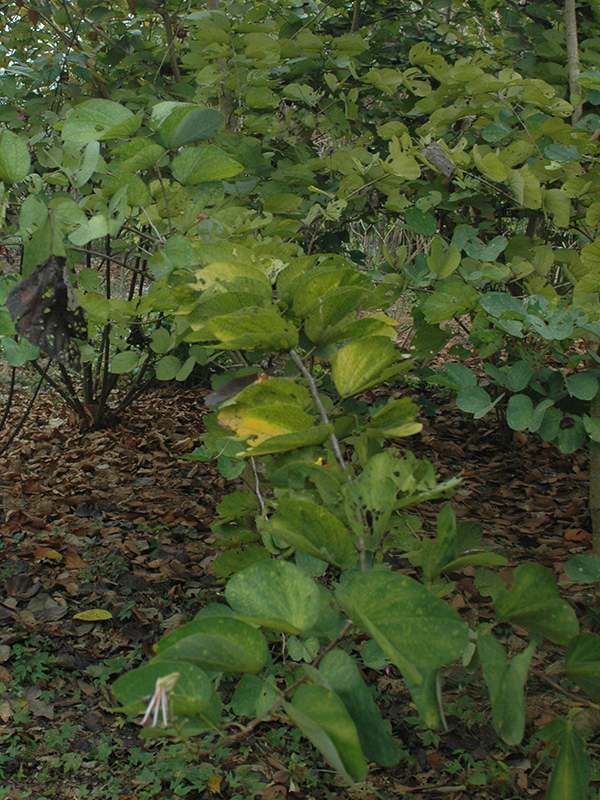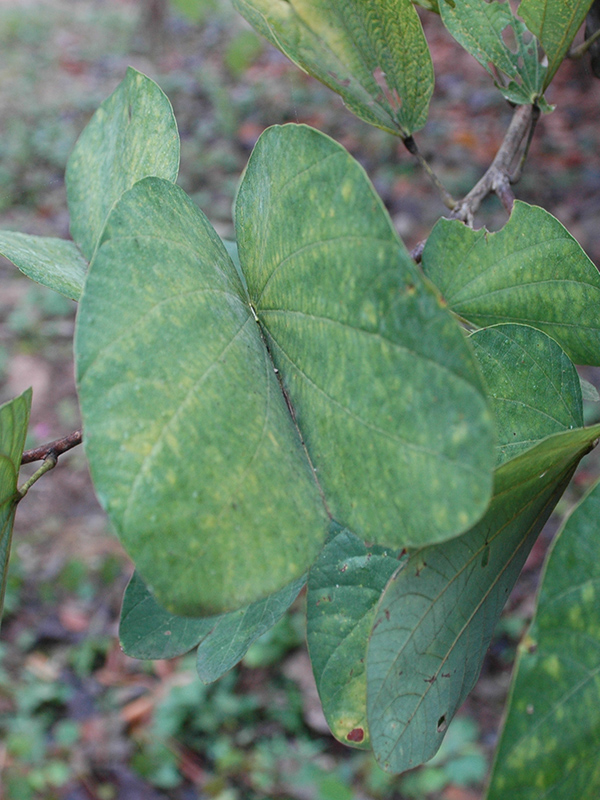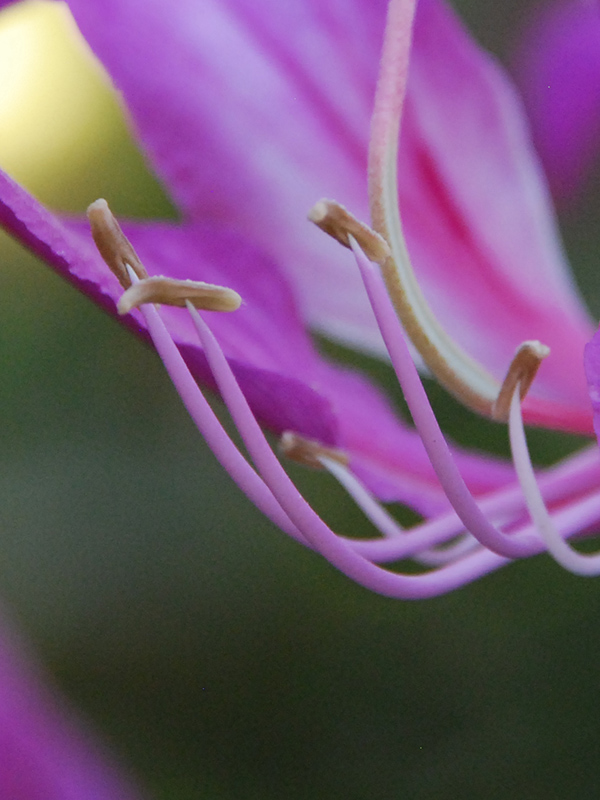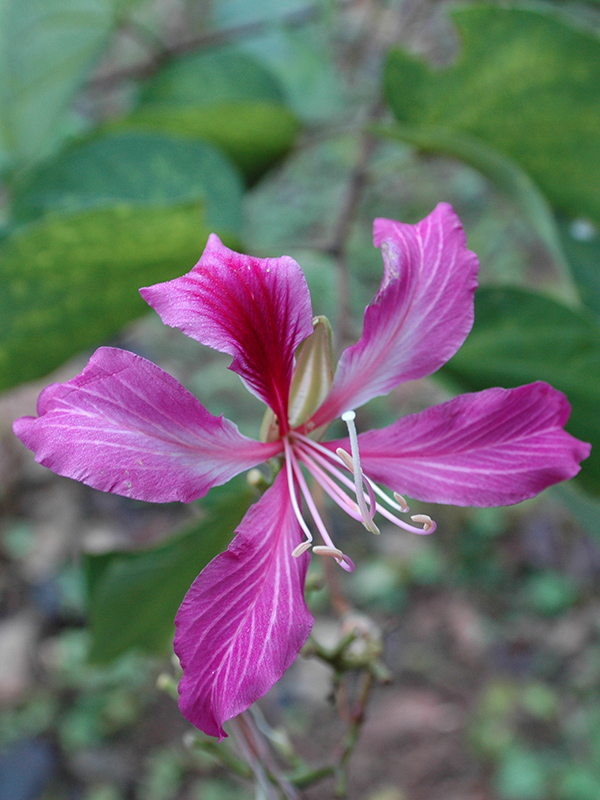| General Description | A fast growing small to medium sized deciduous tree boasting a dense rounded crown consisting of dual-lobed leaves. The tree blooms from September to November producing large, fragrant, bright purple blooms resembling an orchid. |
| ID Characteristic | Alternate simple palmate leaves, dual-lobed with a glabrous petiole. Large rosy purple flowers, up to 10 cm wide, with a strong fragrance are a distinguishable feature of B. purpurea. The fruit is brown, pod shaped and will hang on the branches throughout the winter. |
| Shape | The canopy is elliptical-vase shaped. |
| Landscape | It is planted near decks and patios because of its beauty and fragrance and is used in parking lot islands and highway medians. |
| Propagation | Charge seeds in damp paper towel for up to two days. Plant 2-4 cm below the surface and keep seed flats in a cool shaded area but move to full sun once the seedlings have grown several centimeters. |
| Cultivation | B. purpurea does not perform well in some cityscapes due to its need for slightly acidic soil and thus where it is used in such instances particular attention needs to be paid to soil quality. |
| Pests | The tree is susceptible to leaf spot, leaf scorch and Clitoria yellow vein virus. |
| Bark/Stem Description | As a young plant the bark is fairly smooth but as the tree matures the bark becomes very rough. |
| Leaf Description | A , deep green, glabrous, double-lobed leaf that is somewhat heart-shaped and is 5-10 cm in length. Little to no autumn colour change. |
| Flower Description | Blooming from September to November, flowers are large, up to 10 cm in diameter with five petals peeling backward to showcase the prominent stamen. Flowers emit a wonderful fragrance that attracts insects and hummingbirds. |
| Fruit Description | Brown, elongated pods to 15-30 cm in length. Pods contain 10-15 glabrous flat seeds. The pods twist open during the cold winter months to release the seed but some will persist on the tree throughout winter into the spring. |
| Colour Description | Purple flowers, dark green leaves and grey-brown bark. |
| Texture Description | A medium textured tree. |



